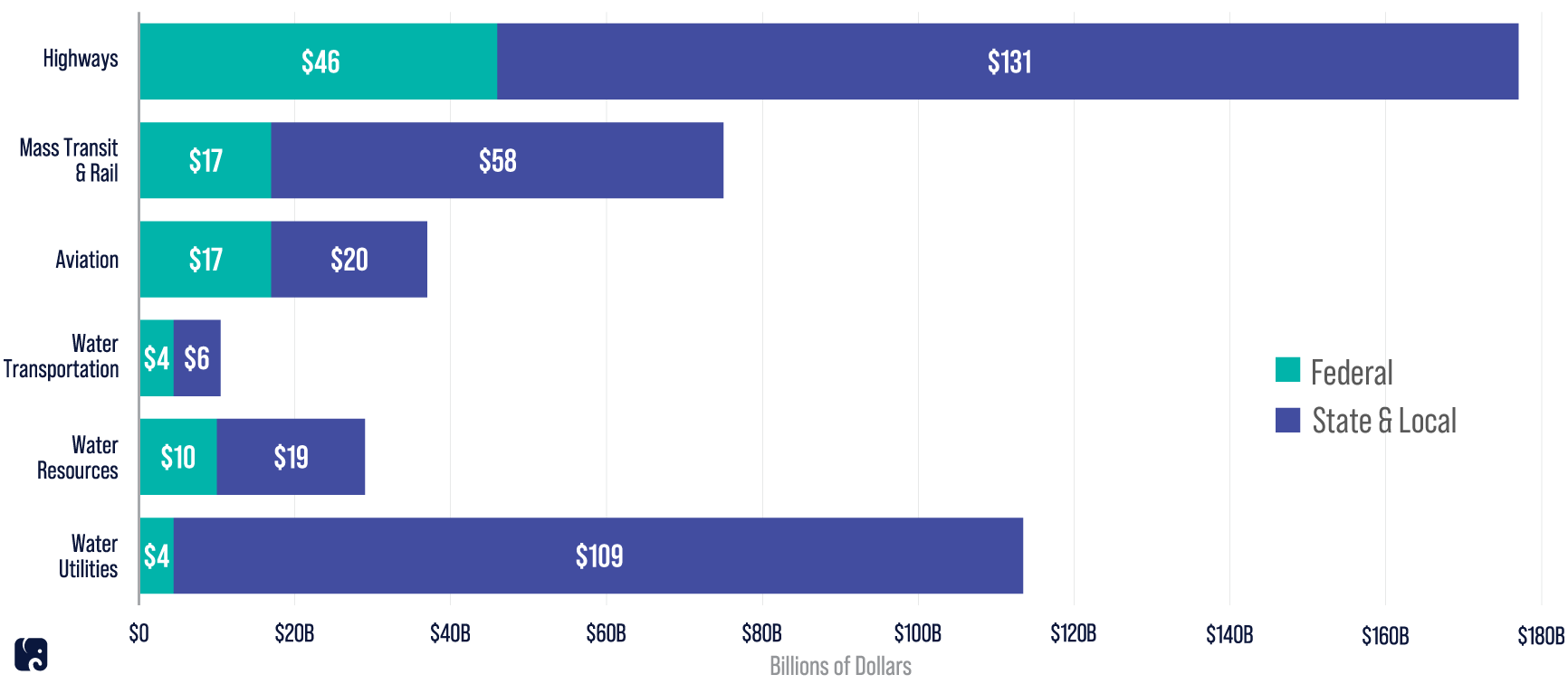What is Infrastructure?
KEY TAKEAWAYS
- Infrastructure is fundamental to America’s economy and our ability to move people and goods freely and efficiently.
- The federal government has historically invested in transportation and water infrastructure.
- Democrats should work with Republicans to address our nation’s most immediate infrastructure needs before expanding the scope to include unrelated pet projects and policies.
Infrastructure is a building block of America’s economy and our ability to move people and goods freely and efficiently. While there is no set definition of infrastructure, federal investment has traditionally been concentrated on the systems supporting transportation and water resources. In recent years, the term has expanded somewhat to cover things like broadband and water utilities. Now Democrats are trying to redefine infrastructure once again, to include climate initiatives, schools, and hospitals in order to direct federal dollars to partisan projects and priorities.
Federal Role in Infrastructure
Before Washington broadens the idea of infrastructure so much it becomes meaningless, it should first focus on areas where there is bipartisan agreement about a federal role. While the federal government has provided support for infrastructure across many segments, it has focused resources in the areas of transportation and water. Even in these areas, state and local governments have accounted for most of the spending. According to the Congressional Budget Office, the federal government spent approximately $98 billion on transportation and water infrastructure in 2017, compared to $342 billion by state and local governments.
In other segments of infrastructure, state and local governments and the private sector have an even larger share of the responsibility. Most schools receive funding generated by local property taxes. Major utility companies have increased spending on their electricity distribution systems.
This division between federal, state, and local infrastructure roles seems to be roughly what the Founders had in mind. In Federalist No. 14, James Madison countered the argument that the country would be too large to be governed effectively by a federal government by noting the possible “internal improvements” in road and water travel that the federal government could provide.
Is it Infrastructure? Or Not?

Unintended Consequences of more federal spending
Last year, in response to questions stemming from the Coronavirus, Aid, Relief, and Economic Security Act, CBO advised that increased infrastructure spending at the federal level could actually cause states and the private sector to reduce spending. The agency warned there was a high probability that states could cut infrastructure spending by $0.20 to $0.80 for each dollar the federal government spent. Before expanding the federal responsibility for “infrastructure” to include unrelated areas – where others are already leading investment – Congress should first focus on the transportation and water infrastructure where it has had bipartisan success.
Traditional Infrastructure Is a Federal, State, and Local Responsibility

Source: CBO
Next Article Previous Article
